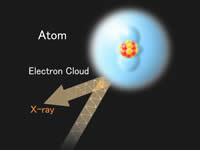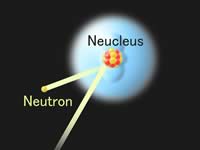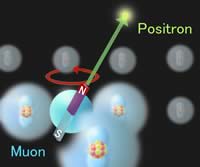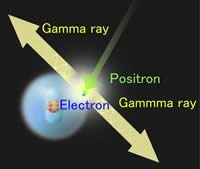
Synchrotron radiation is a hig -brilliant light with a wide range of energies ( wavelengths ) from an accelerator. Ultraviolet light and X-rays are used to investigate the configuration of atoms and the behavior of electrons in materials.

Neutrons generated in a proton accelerator can identify nuclei. They are useful to observe the structure and motion of light elements, such as hydrogen and lithium. A part in interest is clearly detected by replacing with isotopes. Their permeability is very strong, and the structure inside materials can be investigated.

Muons are born as the decay product of pions which were generated by a proton accelerator. Muons are intrinsic magnets, acting as atom-sized compass which can be used to investigate the local magnetic fields in materials. Negatively charged muons are known to emit X-rays unique to each element, and they can be used to for element analysis.

A positron is the antiparticle of an electron and is generated by an electron beam from a linear accelerator. Gamma rays, which are a result of the annihilation of a positron and an electron in a material, and positronium, which is a pair of an electron and a positron, are used to investigate the structure of materials.